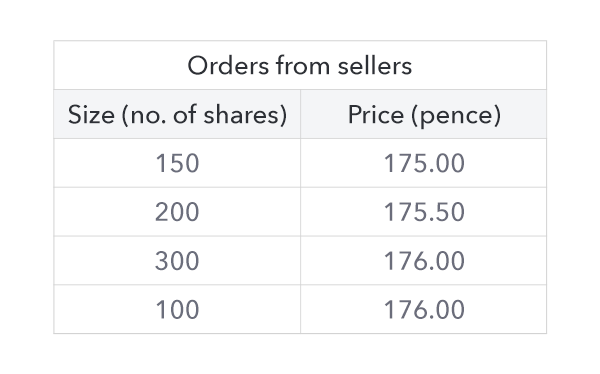When you place an order to trade, your broker or trading provider should attempt to fill it according to your requirements. However, variable market conditions mean it’s not always possible to execute your order exactly as you hoped.
To see how and why this can happen, it’s necessary to understand the process your order goes through after you place it.
How are orders executed?
When you place a market order, or when a stop or limit order is triggered, your broker or trading provider will immediately look for corresponding orders in the market to match yours.
So if you want to buy 100 shares in ABC plc at 250p, a seller who has placed an order for at least 100 shares at that price will need to be found. If there are no orders available in sufficient size at the price level you want, your order can’t be filled as it stands, unless the broker decides to trade with you from its own inventory.
To cater for this situation, which can be quite common in less-liquid markets, you can often choose to have your order classified in various ways. For example, if you’ve selected a fill or kill order, the broker must fill it immediately in its entirety, or cancel it. Alternatively, an execute and eliminate order will be filled as far as possible at the price you specify, then any remaining part of the order will be cancelled.
Market order execution
As we saw earlier, a market order is an order to deal at the best price currently available, with execution guaranteed if there’s sufficient liquidity in the market. So if you’re using this type of order your broker will source the closest possible deal to the one you want. This might involve filling part of your order at the price you selected and the remainder at the next best price on offer.
Question

Tom wants to buy 500 shares in ZXY plc. He sees that the ask price quoted is 175.00p, and he places a market order. The current order book (the list of orders on the exchange) for ZXY plc is shown in the table above.
How is Tom’s order filled?
- a 500 shares at 175.00p
- b 150 shares at 175.00p (remainder of order not executed)
- c 150 shares at 175.00p; 200 shares at 175.50p; 150 shares at 176.00p
- d 500 shares at 176.00p
Reveal answer
Fortunately, for major markets there are usually large volumes of traders looking to buy and sell at any given time. However, if you’re dealing in a less liquid market or in a very large size, you’re more likely to experience difficulty in getting the price you want.
Order duration
Suppose you place an order today to buy gold if the price rises by $100 from its current level. If the metal failed to hit that price until a date in a years’ time, it’s probably fair to say that you wouldn’t want your order to be filled automatically. Many factors affecting your decision to trade could have changed by then –– not least that you might have got tired of waiting and invested your funds elsewhere.
For this reason, you can normally set the duration for an order, after which it will be cancelled. Here are some of the main classes of order you can choose:
- Good till cancelled (GTC)
Order remains valid until you cancel it yourself or the order is filled. On some exchanges, the order may only be valid for a specified period, so it may be worth checking with your broker. - Good for the day (GFD)
Order remains active until the end of the trading day on which you place it. Check with your broker to see when your chosen market closes. - Good till date/time
You must select a date and time when you want your order to be cancelled if it hasn’t been filled. - Fill or kill (FOK)
If the order can’t be filled in full immediately, it will be cancelled. - Execute and eliminate
As much of the order as possible will be filled at the price you specify. Any remaining part of the order will be cancelled.


